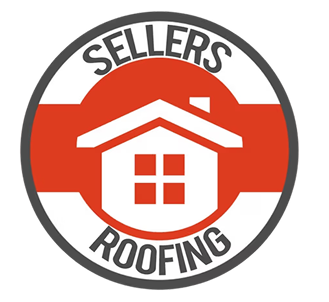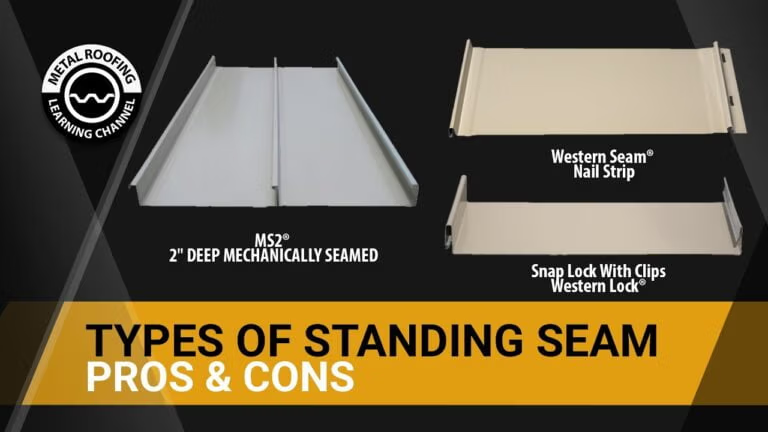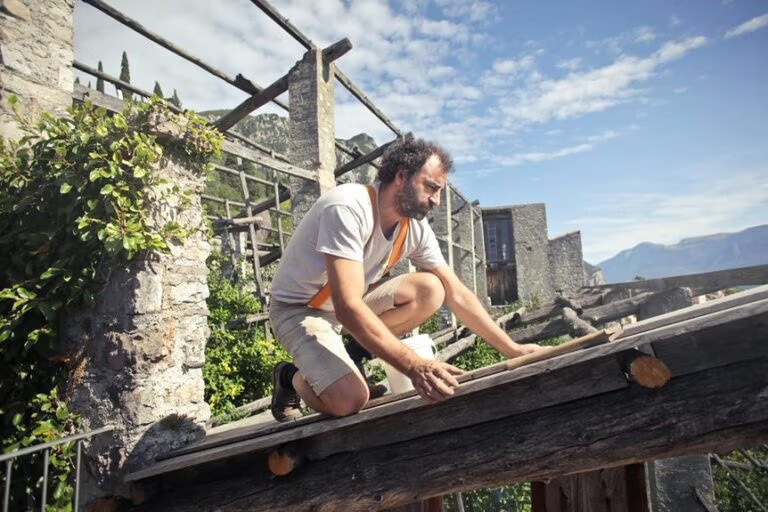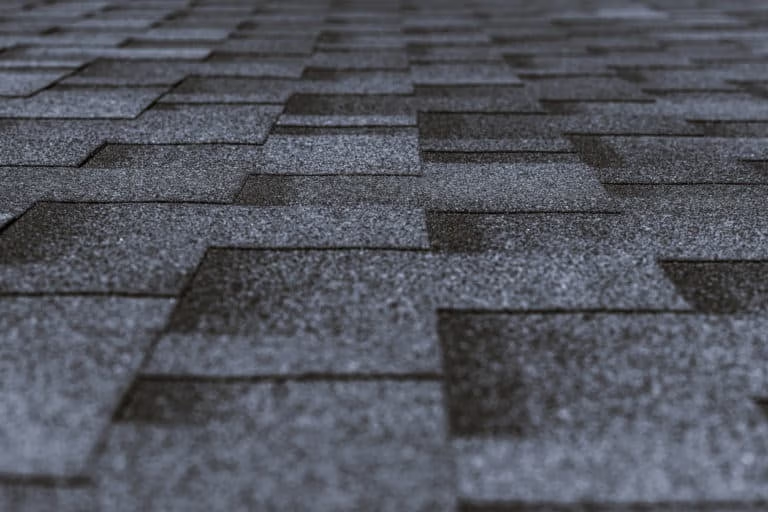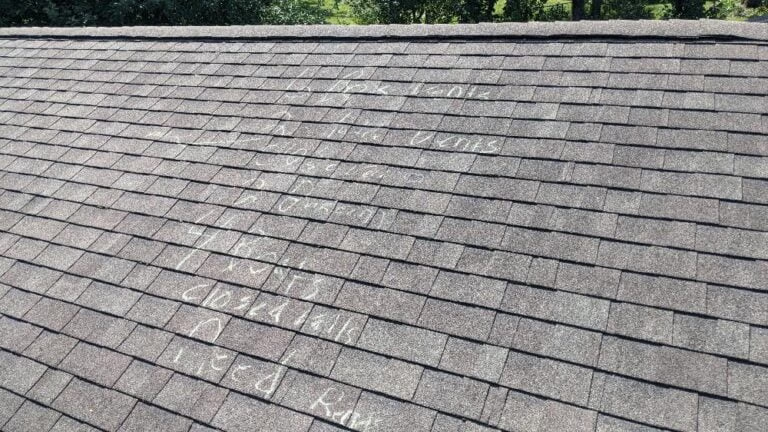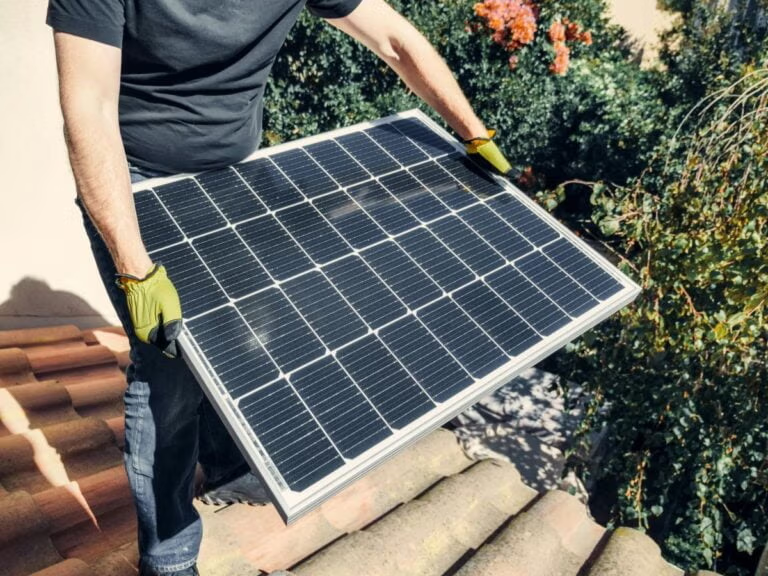Embarking on a commercial roof inspection is like detective-work on your building’s hat. This step-by-step guide ensures you’re well-equipped to spot and address potential issues. A thorough inspection can save you heaps of money and stress, much like catching a leaky faucet before it floods your kitchen. Start with a roof inspection checklist to catch seasonal problems like ice dams or leaks. Remember, your roof inspection includes a detailed look at cracks, clogged gutters, and flashing.
Key Takeaways
Spotting seasonal vulnerabilities like ice dams and leaks is crucial for a commercial roof inspection.
Regular checks and preventive measures help extend the lifespan of a commercial roof.
Partner with reliable roofing contractors like Sellers Roofing for expert guidance.
Use a detailed roof inspection checklist to catch potential issues early.
Ensure your roof inspection includes a thorough check of cracks and clogged gutters.

Common Issues Detected During Roof Inspections
Spotting issues during roofing inspections often turns up some usual suspects. Cracks and clogged gutters are common culprits of trouble. Flashing defects can sneak up on you, causing leaks when you least expect them. A building roof inspection often highlights these problems, hinting at the costly repairs if left unattended.
Winter, with its ice dams and thermal shock, poses a serious threat. These seasonal vulnerabilities can wreak havoc on even the sturdiest roofs. Understanding how to do a commercial roof inspection helps catch these issues early, saving your wallet and your peace of mind.
Water ponding is another red flag during industrial roof inspections. It’s like leaving a puddle on your kitchen floor—eventually, it’ll become a mess. And don’t forget about parapet walls and perimeters; they’re notorious for leaks.
Consulting experts like West Roofing Systems or Nations Roof might just be your golden ticket. Their insights can lead you to a thorough roof inspection report, spotting potential nightmares before they manifest. Their experience mirrors the expertise found on Sellers Roofing’s YouTube channel, offering a treasure trove of tips. In short, don’t skip steps. Taking your time now prevents headaches later.

Preventive Measures to Avoid Roofing Problems
Taking steps to prevent roofing headaches is like having an extra insurance policy. Attending to potential issues before they rear their ugly heads can save both time and money. Regular inspections are the bread and butter of maintenance. But how to do a commercial roof inspection effectively? Start by considering a few key actions.
Schedule Routine Inspections: Twice yearly is ideal, especially before harsh weather hits.
Clear Debris: Leaves and branches can clog drains, leading to water damage.
Check for Leaks or Damage: Pay attention to seams and flashing. These are common trouble spots.
Ensure Proper Drainage: Standing water is a silent threat. It can weaken the roof over time.
Hire Professionals: Sometimes, a commercial roof contractor like Sellers Roofing is your best bet.
Document Findings: A thorough roof inspection report can guide future maintenance needs.
Stay Informed: Following experts like West Roofing Systems can offer valuable insights.
Keeping these measures in mind, you’re well on your way to a leak-free roof. Remember, a stitch in time saves nine. Proactive maintenance is the key to a long-lasting roof.
Benefits of Regular Roof Maintenance and Inspections
Reaping the benefits of consistent roof checks and upkeep is like having an umbrella on a rainy day—it saves you from bigger storms. Regular inspections mean spotting issues before they morph into costly nightmares. Think of it as catching a leak before it becomes a waterfall in your living room. Industrial roof inspections can pinpoint vulnerabilities like ice dams or clogged gutters. This early bird approach can save both money and headaches.
When contemplating how to do a commercial roof inspection, focus on areas prone to leaks. Parapet walls and perimeters are hotspots. A professional eye, maybe from West Roofing Systems or similar, can catch these problems. This isn’t just about saving pennies; it’s about peace of mind.
Having the right roofing contractors means your roof performs like a well-oiled machine. They know what a thorough roof inspection includes, from spotting blisters to identifying uplifted seams. Companies like Sellers Roofing make this look easy.
In the end, maintaining your roof isn’t just another task; it’s a smart investment. And if you’re curious about contractor craftsmanship, Instagram showcases some impressive transformations.
Aspect of Maintenance | Inspection Details | Frequency | Benefits |
|---|---|---|---|
Visual Checks | Look for visible damage | Monthly | Early problem detection |
Professional Evaluation | Hire experts like West Roofing | Annually or Bi-Annual | Prolonged roof lifespan |
Gutter Cleaning | Remove clogs and debris | Quarterly | Prevents water damage |
Weather Damage Inspection | Post-storm checks | As needed | Quick damage repair |
Flashing and Sealant Check | Inspect and repair | Annually | Prevents leaks |
Preventive Maintenance to Extend Roof Lifespan
Extending the lifespan of your roof relies on consistent care. Routine maintenance plays a pivotal role in this, ensuring small issues don’t snowball into costly repairs. One effective way to implement this is through a commercial roof inspection.
Think of inspections as regular doctor visits for your roof. You identify minor ailments before they become major headaches. Want to keep those leaks and cracks at bay? Regular checks are your best friend.
For instance, employing professionals like West Roofing Systems or even Sellers Roofing for their expertise can be a game-changer. They help pinpoint hidden vulnerabilities and suggest timely interventions. Another added bonus? These experts often have access to advanced tools that guarantee thoroughness.
Ever thought about what’s lurking in your gutters? Clogged debris is a silent enemy, leading to water damage. Regular cleaning is crucial.
Now, here’s a tip: industrial roof inspections aren’t just for factories. They bring a meticulous approach that benefits all structures.
Lastly, don’t let seasonal changes catch you off guard. Each season brings unique challenges, so adapt your maintenance routine accordingly. This proactive stance ensures your roof performs its best, season after season.
Identifying Common Roof Issues and Their Causes
Spotting frequent roof problems and their origins often feels like detective duty. Ponding water is a notorious culprit, usually due to poor drainage or sagging areas. Imagine a mini swimming pool. Over time, this can erode materials, potentially leading to leaks.
Cracks are another pesky problem, often appearing in older roofs or those exposed to thermal shock. A sudden shift from hot to cold can do quite a number, making those cracks spread like gossip in a small town.
Flashing issues are common offenders, too. When not properly sealed, water sneaks in, causing damage underneath. Think of it as the weak link in a chain. Roof performance hinges on addressing these issues promptly. Visual inspections are your first line of defense. But sometimes, a core sample is needed to dig deeper into what’s really going on.
And don’t forget those pesky blisters! They pop up when moisture gets trapped. It’s like a bubble under your skin, and equally uncomfortable. Keeping the roof clean and debris-free is essential. A clean roof often means a happy roof. So, ensure your sentry in maintaining it.
Preventive Maintenance Strategies for Long-Term Roof Health
Maintaining a roof’s longevity demands strategic care. Regular inspections, especially after harsh weather, are pivotal. Knowing how to do a commercial roof inspection effectively means spotting issues before they escalate. Be sure to check for loose shingles, blocked gutters, and water damage. It’s like giving your roof a thorough check-up, ensuring it’s fit and healthy for the long haul.
Now, seasonal inspections are your secret weapon. They help you catch wind-related damages or ice buildups. Think of it as prepping your roof for a marathon through the seasons. Partnering with a reliable roofing team, like Sellers Roofing, ensures professional insights and actions.
To truly excel in roof maintenance, create a schedule. Bi-annual inspections give you a solid rhythm. This isn’t just about fixing problems; it’s about preventing them. What you really want is a roof that performs under pressure. So, clean off debris, fix small issues immediately, and remember, a stitch in time saves nine. In the end, a well-maintained roof isn’t just a shelter but a wise investment for the future. Let’s keep that roof in tip-top shape!
Selecting the Right Roofing Contractor for Your Needs
Finding the right contractor is like hunting for that perfect pair of shoes. It needs to fit just right, or you’ll end up with blisters. Start by asking about their experience with similar projects. A contractor who knows how to do a commercial roof inspection will have a toolbox full of insights. Don’t shy away from requesting references and seeing their past works. It’s not snooping; it’s homework.
Talking shop about licenses and insurance is crucial too. You wouldn’t want to be stranded if things go south. Plus, a good contractor should communicate clearly and be as transparent as a glass window. You know, the kind you don’t crash into!
Finally, consider their customer service. A friendly vibe can make all the difference, especially when surprises pop up. Imagine having a partner who’s there with a cool head and a warm smile. And remember, the cheapest option isn’t always the best. Sometimes, quality is worth the extra penny. This way, your roof performs like a well-oiled machine, ready to brave any storm. Keep your eyes open and trust your gut!

Understanding Roof Inspection Safety Protocols and Precautions
Navigating the nuances of roof inspection safety is paramount. Keeping safety as a priority ensures both the well-being of the personnel involved and the integrity of the inspection process. Adhering to OSHA regulations is non-negotiable; these guidelines are the backbone of a safe inspection. Proper footwear, secure ladders, and strategically marked areas are essential. Such precautions are like a good pair of boots—you won’t get far without them.
Always utilize protective gear, like gloves and helmets. This isn’t just about compliance; it’s about returning home safe. Clear communication between team members is crucial. It’s like dancing in step, ensuring everyone knows the routine and avoids missteps.
While focusing on safety, don’t overlook the small details. These can be pivotal during an inspection. This careful attention mirrors the meticulous approach seen at Sellers Roofing, where safety and quality go hand in hand.
In the pursuit of how to do a commercial roof inspection effectively, emphasizing safety protocols elevates the inspection’s outcome. It’s like building a sturdy foundation—ensuring everything else stands strong. Remember, safety isn’t just a protocol; it’s a culture that should permeate every aspect of the inspection process.

Budgeting for Regular Roof Inspections and Maintenance
Allocating funds for routine inspections and upkeep of your roof can save substantial costs in the long run. By integrating regular checks into your budget, you proactively address potential issues before they escalate. This is especially crucial when pondering how to do a commercial roof inspection effectively.
Think of it as a small insurance policy against major repairs. Consistent inspections help identify areas needing attention, like clogged gutters or minor leaks, before they become costly headaches. Regular maintenance ensures the roof performs optimally, extending its life and maintaining its integrity.
Not all inspections are created equal, though. Investing in a reputable service, such as Sellers Roofing, ensures thorough and professional evaluations. They bring expertise and a trained eye to spot potential problems that might be missed.
A proactive approach means fewer surprises and more peace of mind. Scheduling inspections twice a year is a wise strategy. It lets you catch seasonal problems, like winter ice damage, before they wreak havoc. Just like a car needs regular oil changes, your roof needs consistent care to run smoothly.
Managing Roof Inspection Reports and Documentation Effectively
Effectively handling roof inspection reports and documentation can feel like herding cats, but with the right approach, it’s manageable. Start by organizing reports digitally. This makes them easily accessible and shareable. Digital documentation also reduces clutter and the risk of losing important papers. Use cloud storage for easy access and backup.
Integrate software that can streamline the process. Some programs even allow you to annotate directly on digital blueprints. This not just saves time but makes communication clearer. It’s like having a GPS for your inspection journey.
Consistency is your ally. Create a system for filing and following up on findings. This could be a simple checklist or a more detailed database. Consider it your roadmap to a headache-free inspection process.
Stay on top of your game by reviewing past reports before new inspections. This provides a history of issues and repairs, helping you anticipate future needs. It’s akin to reading yesterday’s weather to predict tomorrow’s forecast.
Lastly, ensure all involved parties can access these documents. Transparency fosters trust and maintains accountability. It’s not just about ticking boxes; it’s about ensuring the roof performs its best, rain or shine.
Key Areas to Focus on During Inspection
Focusing on pivotal areas during a roofing inspection ensures a comprehensive evaluation. Begin with the roof’s perimeter. This is often a hotspot for leaks due to its exposure to the elements. Check for signs of wear or damage.
Next, pay attention to flashings and sealants. These components protect against water intrusion but can deteriorate over time. Keep an eye out for any cracks or gaps.
Inspect the roof surface for blisters, ponding water, and uplifted seams. These can indicate underlying issues that need addressing. It’s like inspecting a cake’s frosting for cracks—it might hint at problems deeper in the mix.
Don’t forget the internal drainage systems. Clogged gutters or drains can lead to water pooling, impacting the roof’s performance. Finally, examine the roof’s interior components, such as insulation and vents.
Table: Key Areas and Tips for a Thorough Roof Inspection
Inspection Area | Common Issues | Inspection Tips |
|---|---|---|
Roof Perimeter | Leaks, Wear | Visual check for damage |
Flashings & Sealants | Cracks, Gaps | Inspect for deterioration |
Roof Surface | Blisters, Ponding | Look for surface irregularities |
Internal Drainage | Clogged Gutters | Ensure clear water pathways |
Checklist for Effective Inspection:
Start with the perimeter.
Examine flashings.
Check sealants.
Inspect the roof surface.
Review internal drainage.
Look at insulation.
Evaluate vents.
Document all findings.

Common Roofing Issues to Look Out For
Spotting those pesky roof problems early can spare you a headache. Keep your eyes peeled for cracks that sneak in, especially after wild weather. Like a thief in the night, water can find its way through, leading to damage those spreads. Clogged gutters are another sneaky culprit. They might seem harmless, but they can escalate into bigger issues faster than you can say, “Where’s that leak coming from?”
Another sneaky troublemaker? Defective flashing. It’s like the glue holding your roof together, yet it can wear out over time. When it does, water will befriend it, causing havoc.
Looking beyond the obvious, sometimes it’s what’s brewing below the surface that matters. Roofs can perform poorly if you don’t check for insulation issues. A little detective-like inspection can save you big bucks.
Finally, don’t underestimate the power of regular check-ups. They’re like a spa day for your roof, making sure everything’s in tip-top shape. If you remember nothing else, remember this: A stitch in time saves nine, especially when it comes to your roof. Save yourself from a rainy day disaster!
Tools and Equipment Needed for Roof Inspection
Examining the necessary gear and gadgets for a thorough roof investigation is crucial. When figuring out how to do a commercial roof inspection, you’ll need reliable equipment. Start with binoculars for a solid preliminary view from the ground. They let you spot obvious issues without climbing up. Next, a sturdy ladder ensures safe access to the roof. Don’t skimp—stability is key!
Once up there, a moisture meter is essential. It detects hidden damp spots that could spell trouble later. Pair it with an infrared thermometer to gauge temperature inconsistencies, revealing potential insulation issues. A roofing hammer will help you gently test roof integrity without causing damage. For documentation, a good camera or smartphone is indispensable. Capturing clear images allows you to track changes over time.
A safety harness, even for pros, isn’t just a suggestion—it’s a must. Safety first, folks! And if you’re feeling a bit overwhelmed by all this, maybe check out Sellers Roofing’s YouTube channel. They’ve got videos on gear use that might just make this inspection gig less daunting. Sometimes, watching someone else handle the tools makes your toolbox feel a little lighter, right?
Common Roof Defects and How to Spot Them
Spotting those pesky roof defects isn’t rocket science. Look for blisters or uplifted seams as these could be signs your roof is crying out for help. A symptom of trapped moisture, blisters can lead to larger issues if ignored. Uplifted seams, meanwhile, are like the torn pages of a book, hinting at a tale of wind damage.
When thinking about how to do a commercial roof inspection, keep an eye out for ponding water. This stagnant menace is a telltale sign of drainage woes. If left unchecked, it could be the bogeyman haunting your roof’s service life.
Cracks are another usual suspect. Often found around flashings or roof edges, cracks can invite leaks faster than a free buffet invites freeloaders. A quick visual scan can help you catch these sneaky creepers.
Lastly, don’t forget the gutters. Clogged gutters are like a traffic jam on a rainy day. They can obstruct water flow, causing overflow and potential damage. Regular checks can help keep these issues at bay. Keeping your roof in top-notch condition isn’t just about knowing what to spot, but acting swiftly once you do.
Common Roofing Problems and How to Identify Them
Spotting issues is key when figuring out how to do a commercial roof inspection effectively. Thermal shock often leaves cracks in its wake, especially during winter. Inspect areas where temperature changes are most noticeable. Blisters can also form, making your roof look like it’s got a case of teenage acne. Keep an eye out for these unsightly bumps during warmer months.
Gutters clogged with debris are another common headache. Like a clogged artery, they can lead to bigger problems if ignored. Regular cleaning helps prevent water from flooding where it shouldn’t.
Flashing defects often masquerade as insignificant gaps. Yet, they can cause leaks quicker than you can say “rainstorm.” A detailed inspection should focus on these sneaky spots.
To stay on top of these troubles, consider scheduling bi-annual checks. This proactive approach ensures that your roof performs at its best, saving you time and money.
For those seeking expert guidance, Sellers Roofing’s Google page offers valuable insights. They have a knack for identifying and treating these common nuisances. Taking these steps makes sure your roof stays as sturdy as a well-built fortress.
Benefits of Regular Roof Inspections for Business Owners
The perks of consistent roof evaluations for business owners are evident. Spotting issues early on saves money and prevents major headaches. Think of it as catching a small leak before it turns into a waterfall. Regular checks ensure your roof performs optimally, safeguarding your assets.
Picture yourself navigating the maze of how to do a commercial roof inspection. You don’t want to miss a beat. Keep an eye out for clogged gutters, sneaky cracks, and those pesky ice dams. Address these troublemakers before they wreak havoc on your building.
Proactive maintenance isn’t just a buzzword; it’s your best friend. By establishing a routine, you can extend the lifespan of your roof and avoid costly repairs. It’s like giving your roof a spa day—removing debris, addressing ponding water, and keeping it in tip-top shape.
Finding the right contractor is like finding a good barber. You want someone who knows their stuff, offers great service, and doesn’t leave you with regrets. Prioritize safety—adhere to OSHA regulations and use proper techniques to avoid accidents. With these measures in place, your roof remains a steadfast guardian.
How Weather Conditions Affect Roof Durability
Weather conditions play a huge role in the durability of your roof. Fluctuations in temperature can cause materials to expand and contract, leading to cracks and leaks. Think of your roof like an uninvited guest at a party—it can handle some surprises, but too many can cause chaos. Wind is another factor; strong gusts can loosen shingles, making your roof vulnerable.
Rain and snow add to the stress. Water can seep into small openings, causing damage over time. Ice dams are a menace, blocking proper drainage and leading to leaks. Before and after harsh weather, it’s smart to check your roof’s condition.
Sunlight isn’t entirely innocent either. Prolonged exposure can weaken materials, leading to premature aging. Regular maintenance is akin to giving your roof a regular check-up.
Understanding how to do a commercial roof inspection can save you from costly repairs later. Aim to spot potential issues early, ensuring your roof performs as expected. By addressing potential problems immediately, you can extend your roof’s lifespan and maintain its integrity. Stay vigilant, and your roof will thank you.
How Weather Conditions Affect Roof Durability
The durability of a roof can be significantly influenced by various weather conditions. High winds can lead to loose shingles or even tear them off entirely. These gusty conditions demand immediate attention, showcasing the importance of knowing how to do a commercial roof inspection effectively. Hailstorms often leave behind dents and cracks, creating vulnerabilities that might not be visible at first glance.
Inspecting these minor damages early is crucial to ensuring the roof performs well over time. Heavy rain, combined with clogged gutters, can lead to water pooling and eventual leaks. This highlights the need for regular debris removal. On scorching summer days, UV rays cause thermal expansion, which over time, weakens roofing materials. Taking the time to inspect for any signs of sun damage can prevent long-term issues.
For those interested in maintaining optimal roof conditions, Duro-Last offers innovative solutions for managing potential roofing challenges here. It’s a tale as old as time: prevention is better than cure, especially when it comes to roofs. Keeping an eye on weather-related wear and tear ensures that your roof remains solid and reliable, protecting what’s beneath it.

Signs Your Commercial Roof Needs Immediate Attention
When your roof hints at needing urgent care, it whispers through obvious signs. Leaks are the most obvious, hinting at unseen troubles. Water stains on ceilings are like a neon sign screaming for attention. If you see them, act fast before a small issue snowballs into a major nuisance.
Mold growth is another red flag, often indicating trapped moisture. This unwelcome guest can lead to serious structural issues and even affect indoor air quality. Don’t ignore it, or you’ll be opening the door to bigger problems.
Cracks and blisters on roofing materials suggest thermal shock or aging. These can compromise the roof’s ability to perform effectively. Don’t let them become an Achilles’ heel; inspect them regularly.
Have you noticed sagging sections? This could indicate structural compromise, often due to water damage or excess weight. Addressing these issues promptly can save you from costly repairs.
Wondering how to keep your roof performing optimally? Regular inspections can catch these signs early. Knowing how to do a commercial roof inspection empowers you to maintain a healthy roof, ensuring it protects your investments for years to come. Remember, a stitch in time saves nine!
The Impact of Building Codes on Roofing Standards
Navigating the influence of building codes on roofing quality and safety is a complex task. Adhering to these codes ensures roofs perform optimally, impacting not just the durability but also the overall safety. Simply put, these codes serve as a blueprint for quality, dictating materials and installation techniques. They serve as a guide on how to conduct thorough evaluations, ensuring compliance and longevity.
So, what’s the connection to how to do a commercial roof inspection? Understanding these codes can be your secret weapon. They set the baseline for what needs to be checked. Ensuring all elements align with these codes determines the effectiveness of your inspections. It’s like checking the recipe while cooking; you want to be sure every ingredient is just right.
Moreover, these codes evolve, often adapting to new safety and environmental standards. Keeping up with these changes is crucial. It’s like updating your smartphone’s software to improve performance. Ignoring these updates can lead to issues, like leaks or material failures.
By mastering the nuances of these codes, you can ensure your roof remains secure and compliant, safeguarding your investments.
Cost-Effective Solutions for Commercial Roof Maintenance
Maintaining the structural integrity of a building is like caring for a classic car. It requires attention, precision, and a keen eye for detail. Understanding how to do a commercial roof inspection efficiently is a cornerstone in this process. Think of it as a routine check-up that prevents those pesky leaks or thermal shocks from becoming costly nightmares.
Start with seasonal vulnerabilities—ice dams in winter or heat blisters in summer are common culprits. Cracks and clogged gutters are like potholes on a highway; they need immediate attention. The secret sauce? Regular inspections. They aren’t just a line item on a to-do list; they’re your best defense against future headaches.
Hiring professionals for these inspections is like having a pit crew for your roof. They spot issues faster than you can say “roof perform roof.” Their expertise ensures you catch problems early, saving you time and money.
But don’t neglect safety. Adhering to protocols is as crucial as wearing a seatbelt. Marked areas and proper gear are non-negotiable. Your roof’s longevity depends on these practices. So, roll up your sleeves, or better yet, call in the pros for a smooth ride.
Guidelines for Managing Roof Repair Emergencies
Managing emergencies related to roof damage involves swift and calculated actions. Start by assessing the severity of the damage; a quick visual inspection can save you a world of trouble. Look for obvious signs like missing shingles or debris after a storm. If you’re wondering how to do a thorough commercial roof inspection, think of it like a doctor’s check-up for your roof.
Next, prioritize safety. Keep everyone clear of the affected area until professionals can assess it. Don’t play the hero; some things are best left to the experts. In emergencies, temporary fixes like tarping can prevent further damage. But remember, these are just Band-Aids. Schedule a professional repair as soon as possible.
Timing is crucial. Delaying repairs can lead to bigger headaches, like interior water damage. If you’re having doubts about your roof’s resilience, these folks at Sellers Roofing are known for their expertise. They can offer insights you might miss on your own.
And remember, documentation is key. Take photos and notes; these will be invaluable for insurance claims and repair estimates. Lastly, once the dust settles, invest in regular inspections to prevent future emergencies.
Tips for Maintaining Commercial Roofs in Extreme Weather
Extreme weather takes a toll on commercial roofs, demanding consistent upkeep. When pondering how to do a commercial roof inspection, ensure to prioritize these elements. First, regularly check for leaks and water accumulation. Persistent ponding can lead to structural issues and must be addressed promptly. A clogged gutter is not just a nuisance; it can worsen water damage over time. Next, examine the flashing around vents and chimneys. Defective flashing is a common culprit for leaks.
In regions with harsh winters, ice dams form and wreak havoc. Remove them carefully to prevent further damage. In summer, extreme heat can cause thermal shock, leading to cracks. Regular inspections help nip these problems in the bud. Experts recommend bi-annual check-ups, especially before and after severe weather events. For a robust inspection, consider enlisting professionals. They spot issues that might go unnoticed by the untrained eye.
If you’re curious about professional insights, Nations Roof regularly shares valuable updates on their Instagram page. Their experience might offer a new perspective, especially if you’re navigating tricky weather conditions. Proper maintenance ensures your roof withstands the test of time, shielding your investment.
Strategies to Minimize Roof Repair Costs
Minimizing the expenses of roof repairs requires strategic foresight and timely actions. Regular assessments, especially focusing on vulnerable areas, are essential to catch problems early. It’s like catching a small leak before it becomes a waterfall! Invest in professional help; their trained eyes can spot issues invisible to most of us.
Thinking about how to do a commercial roof inspection? Start by checking for clogged gutters and defective flashing. These often lead to bigger troubles if ignored. And those pesky ice dams during winter? Remove them with care. They can cause significant damage if left unattended.
A little birdie told me that scheduling bi-annual inspections is a game-changer. Aim for before and after extreme weather. This helps in spotting damages due to thermal shock or storm wear. It’s like giving your roof a spa treatment after a rough day.
Don’t forget the importance of safety protocols while on the roof. Falling isn’t exactly the kind of excitement anyone needs. By adhering to these practices, you’ll not just cut costs but ensure the roof stands strong against the elements. Now, that’s a win-win!
Innovative Approaches to Roof Inspection Data Management
Exploring fresh strategies for managing roof inspection information reveals a tech-savvy world. Drones, paired with AI, now offer precise visual data. This revolutionizes how to do a commercial roof inspection. Imagine swapping a ladder for a joystick and capturing every nook of the rooftop in high definition. No more squinting at those hard-to-reach spots.
Cloud-based systems ensure data from inspections is stored securely and accessed easily. Forget sifting through piles of paperwork. Everything you need is a click away. This digital shift speeds up processes, allowing quicker decision-making and timely repairs.
Incorporating thermal imaging detects unseen issues like moisture buildup. This goes beyond the naked eye, offering insights that protect your investment. It’s like giving your building a superhero’s vision. Embracing these advancements is key to staying one step (or flight) above the rest.
Evaluating Environmental Impact of Roofing Materials
Assessing how roofing materials influence environmental outcomes is pivotal. Metal roofs, for instance, are often lauded for their recyclability. Asphalt shingles, however, can end up in landfills, overshadowing their energy efficiency. Reflective coatings, on the other hand, reduce heat absorption, making them a sustainable choice. When learning how to do a commercial roof inspection, it’s crucial to evaluate these environmental aspects.
Consideration of the carbon footprint during manufacturing of roofing materials plays a role too. For example, concrete tiles boast longevity but come with a hefty carbon footprint due to cement use. In contrast, green roofs offer ecological benefits by improving air quality and insulation.
Roofing Materials and Their Environmental Impact
Material | Pros | Cons | Inspection Focus |
|---|---|---|---|
Metal Roofs | Recyclable | Energy-intensive to produce | Check for rust and seams |
Asphalt Shingles | Cost-effective | Non-biodegradable | Look for cracking and curling |
Green Roofs | Enhances insulation | Maintenance-intensive | Inspect plant growth and drainage |
Concrete Tiles | Durable | High carbon footprint | Check for cracks and moss |
Factors for Evaluating Roofing Materials
Energy efficiency and heat reflection.
Longevity and durability.
Carbon emissions from manufacturing.
Waste produced during disposal.
Maintenance requirements and challenges.
Potential for recycling or reuse.
Impact on indoor thermal comfort.
Contribution to urban heat island effect.
For professional insights, Sellers Roofing Inc.’s Facebook page shares updates on sustainable roofing trends.

Executing a Thorough Commercial Roof InspectionConclusion
Regular roof inspections and maintenance are the unsung heroes of building management. They might not seem glamorous, but they save businesses a world of trouble. Early detection of potential issues prevents costly damages, making inspections a wise investment.
It’s more than just saving money. Regular roof care ensures safety and peace of mind. Imagine a leaky roof during a big presentation—no one wants that! Scheduling bi-annual inspections and working with experienced contractors keeps surprises at bay.
In the end, think of roof maintenance as routine check-ups for your building. It’s a small effort for a big reward. Protect your investment by keeping the roof over your head in top shape. After all, it literally holds everything together!
FAQ
What are the essential steps for a commercial roof inspection?
Begin by checking the overall structure for visible damage. Inspect key areas like gutters, flashing, and seams. Look for signs of wear and tear, such as cracks or ponding water. Finally, document your findings thoroughly for future reference.
How can I identify common roof issues during an inspection?
Look for signs like water stains, mold, or unusual wear around the roof edges. Check for clogged gutters and defective flashing. Use visual inspections and, if necessary, core samples to detect hidden issues.
Why is regular roof maintenance important for my business?
Regular maintenance helps catch problems early, saving money in the long run. It can prevent major damages that disrupt business operations. It also extends the roof’s lifespan, ensuring a safe environment for employees.
What should I consider when choosing a roofing contractor?
Look for contractors with proven expertise and good customer service. Ensure they follow safety protocols and have a solid reputation. Some offer free inspections, which can be a good way to evaluate their service.
How do weather conditions impact my commercial roof?
Extreme temperatures and severe weather can weaken roofing materials. Inspections before and after major weather events can prevent unexpected failures. Being proactive helps maintain roof durability and protect your investment.
